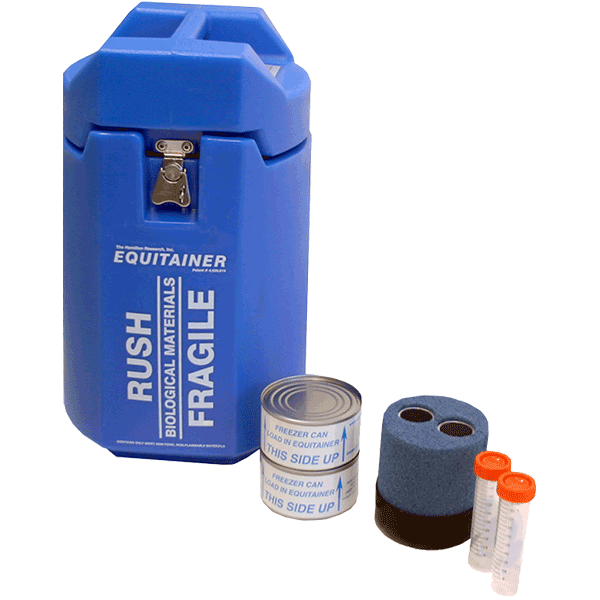Artificial Insemination and Transported Semen FAQs
Q: What do “A.I.” and “T.S.” mean?
A: These terms are used in equine reproduction. “A.I.” is artificial insemination, “T.S.” is transported semen, which is also sometimes known as “shipped semen”.
Q: What is involved in artificial insemination?
A: Instead of the mare being bred “live cover” or “naturally” by the stallion, the semen is collected from the stallion, and introduced directly into the mare’s uterus by means of a syringe and pipette. It is usual to add a diluent in the form of a “semen extender”. This is a nutrient medium for the sperm, frequently containing an antibiotic. The nutrient will elongate the efficient life of the sperm, and the antibiotic, if added, should destroy any infective organisms present.
Q: Why would I use artificial insemination instead of breeding my mare naturally?
A: There are many reasons that A.I. may be used, the most obvious being that instead of the mare being taken to the stallions’ location, the stallion’s semen may be shipped to the mares’ location and the mare bred by A.I. methods. This process is “transported semen” or “shipped semen”. This situation may be desirable if the mare lives a long way from the stallion, does not ship well, or if she has a foal at foot, and the owner does not want to risk shipping them both. Other situations that may indicate the use of A.I. could be that the mare has a uterine infection (which should, of course, be treated prior to, or in conjunction with the breeding), that the mare may be a “bad” mare to handle at breeding time (she may be a kicker and endanger the stallion, or a striker and endanger the handlers), or there may be several mares to be bred on one day. In this latter scenario, the stallion may be collected, and the ejaculate “split” after assessment, and the mares bred with the single split ejaculate. This splitting of the ejaculate can be of use “on farm”, or can be used in transported semen situations, if two or more mares have been synchronized to ovulate together.
Q: What is the cost difference between A.I. or T.S. and live cover?
A: We find that in most cases the cost is about the same. Although there are some additional charges involved in A.I. on farm, in T.S. situations, the charges are offset by there being no additional board or horse transport charges, indeed, in some cases, T.S. is considerably cheaper.
Q: What is the difference in my chances of getting a foal using A.I. or T.S. over live cover?
A: With artificial insemination, especially with transported semen, a lot depends upon the experience of the inseminator, as insemination at the right time is essential. Ideally only one or two inseminations are carried out during the heat cycle, so it is essential that it takes place close to the time the mare ovulates. We will assume your inseminator is knowledgeable and experienced. If you are using A.I. “on farm” for medical (or safety!) reasons, the chances of your mare becoming pregnant are probably greater than by live cover. If you are using transported cooled semen, the chances of conception are marginally lower than by live cover, but the difference is less than 10%. Frozen semen averages are approximately 10% lower than those for cooled semen. Once the mare is pregnant, the chances of a mare that was bred by A.I. or T.S. having a live foal are essentially the same as those for a mare bred by live cover, it’s up to her!
Q: If I’m breeding my mare by shipped semen, how will I know when she is heat and ready to be bred?
A: To identify “heat”, (also known as “estrus”), ideally the mare can be teased with a stallion. Of course, most mare owners don’t have a stallion around! Some mares will “show” to a gelding or even another mare. This method, even if using a stallion, will not however, pinpoint accurately enough when to breed her, as the mare may ovulate any time during her heat cycle. (Some mares are actually inconsiderate enough not to bother showing estrus even though they are ovulating!) It is essential that a veterinarian experienced in equine A.I. be involved to dictate when to order semen for insemination. Sometimes the veterinarian will recommend using hormones to bring the mare into estrus, which can make pinpointing the ovulation a lot easier. (See our article about monotoring and manipulating estrous for more details).
© 1998 Equine-Reproduction.com, LLC
Use of article permitted only upon receipt of required permission and with necessary accreditation.
Please contact us for further details of article use requirements.
Other conditions may apply.



